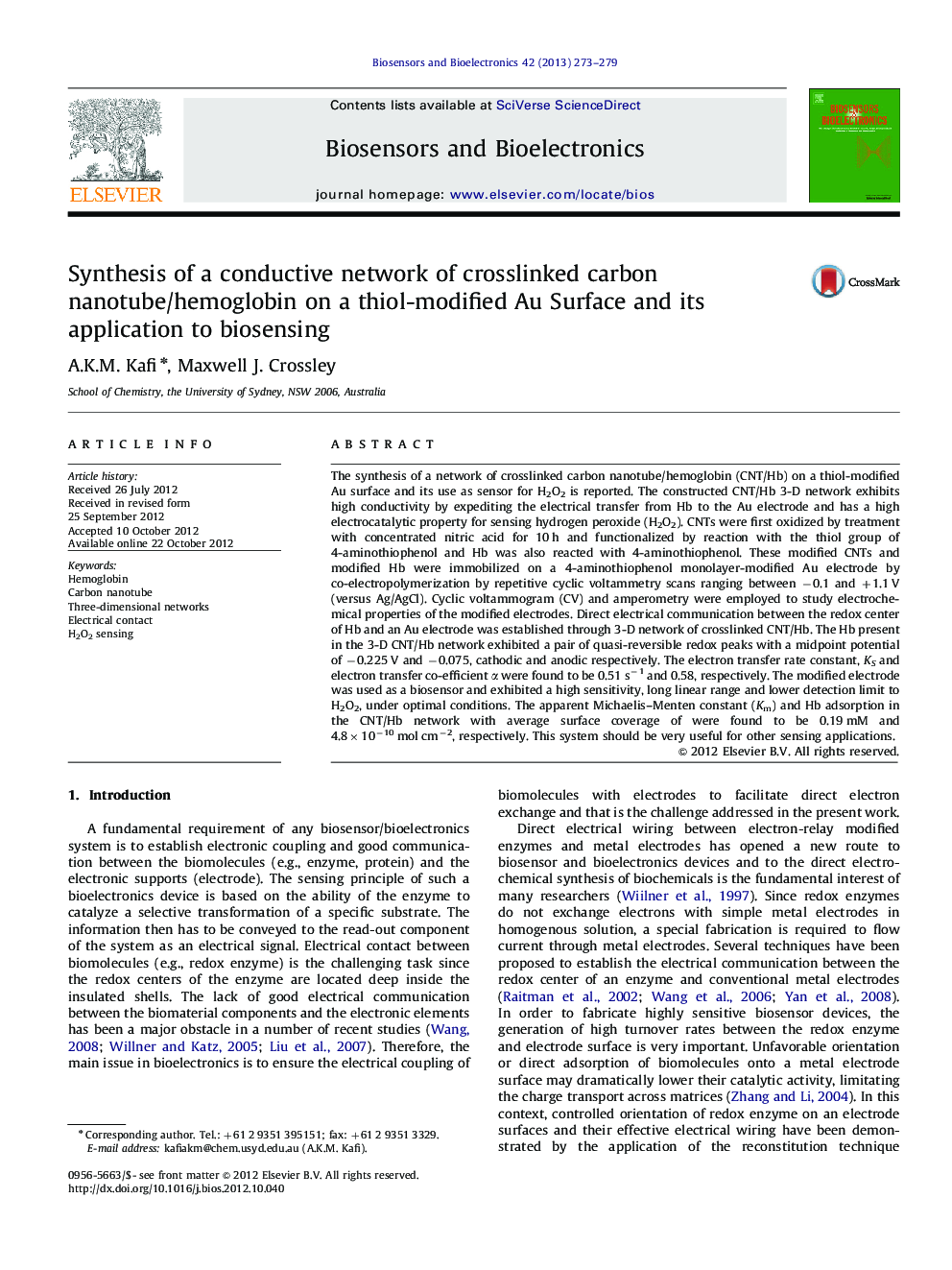| Article ID | Journal | Published Year | Pages | File Type |
|---|---|---|---|---|
| 867104 | Biosensors and Bioelectronics | 2013 | 7 Pages |
The synthesis of a network of crosslinked carbon nanotube/hemoglobin (CNT/Hb) on a thiol-modified Au surface and its use as sensor for H2O2 is reported. The constructed CNT/Hb 3-D network exhibits high conductivity by expediting the electrical transfer from Hb to the Au electrode and has a high electrocatalytic property for sensing hydrogen peroxide (H2O2). CNTs were first oxidized by treatment with concentrated nitric acid for 10 h and functionalized by reaction with the thiol group of 4-aminothiophenol and Hb was also reacted with 4-aminothiophenol. These modified CNTs and modified Hb were immobilized on a 4-aminothiophenol monolayer-modified Au electrode by co-electropolymerization by repetitive cyclic voltammetry scans ranging between −0.1 and +1.1 V (versus Ag/AgCl). Cyclic voltammogram (CV) and amperometry were employed to study electrochemical properties of the modified electrodes. Direct electrical communication between the redox center of Hb and an Au electrode was established through 3-D network of crosslinked CNT/Hb. The Hb present in the 3-D CNT/Hb network exhibited a pair of quasi-reversible redox peaks with a midpoint potential of −0.225 V and −0.075, cathodic and anodic respectively. The electron transfer rate constant, KS and electron transfer co-efficient α were found to be 0.51 s−1 and 0.58, respectively. The modified electrode was used as a biosensor and exhibited a high sensitivity, long linear range and lower detection limit to H2O2, under optimal conditions. The apparent Michaelis–Menten constant (Km) and Hb adsorption in the CNT/Hb network with average surface coverage of were found to be 0.19 mM and 4.8×10−10 mol cm−2, respectively. This system should be very useful for other sensing applications.
► A new three-dimensional conductive network of crosslinked carbon nanotube/hemoglobin on Au. ► Established efficient electrical communication between hemoglobin and the electrode. ► This in turn has generated a much more sensitive biosensor. ► The constructed network exhibits high conductivity and electrocatalytic property to H2O2. ► A very fast response time in the sensing, made cheaply and reliably in a shorttime.
